Communication, Power, and Revolt
Nanni Balestrini and Primo Moroni
The following is an excerpt from Nanni Balestrini and Primo Moroni’s The Golden Horde, appearing with Seagull Books this spring. Long awaited in English, the text consists of a unique mixture of eyewitness narrative and archival documentation, offering the most intimate and wide-ranging portrait to date of class struggle and rebellion in the Italian 1970s.
1977: The Borderline Year
Revolution is when the extraordinary becomes ordinary. Che Guevara’s maxim is fitting to the "mood" of the central figures of the movement of ’77, the year of the great revolt. But ’77 was also underground and unpredictable. In terms of government power, a decade of forgetting had shown a certain fear in dealing with the contents of a social, political and cultural movement that, in that one year above all, demonstrated an irrefutably revolutionary face. 1977 was not like ’68. 1968 was a contestation; 1977 was a radical alternative. This was why we have the ‘official’ versions of good old ’68 and the bad ’77 . If ’68 has been recuperated, ’77 has been annihilated. And this is why the story of ’77, unlike ’68, can never be depicted as a year of celebration.
There has been a rejection of ’77 across the board, including by its own protagonists. Thousands of people have internalized the catastrophic effects of the Italian state’s repressive terrorism, annulling both the memory of their own experience as well as that of their antagonistic identities. And along with these two ‘voluntary’ acts of forgetting, there has been the annihilating effect on social memory produced by the gigantic change in technologies of communication. Yet despite all this, the questions posed by the last mass anti-institutional movement in Italy remain fully relevant today, because they remain questions without answers. And the main question was: "How will the future unfold?" There was a terrifying simplicity to the ‘intuition’ of living on the edge of a vast epochal transformation, one which had been brought to the fore by the crisis in and the exhaustion of all the traditional rules for relations of social organization that were underpinned by the industrial system.
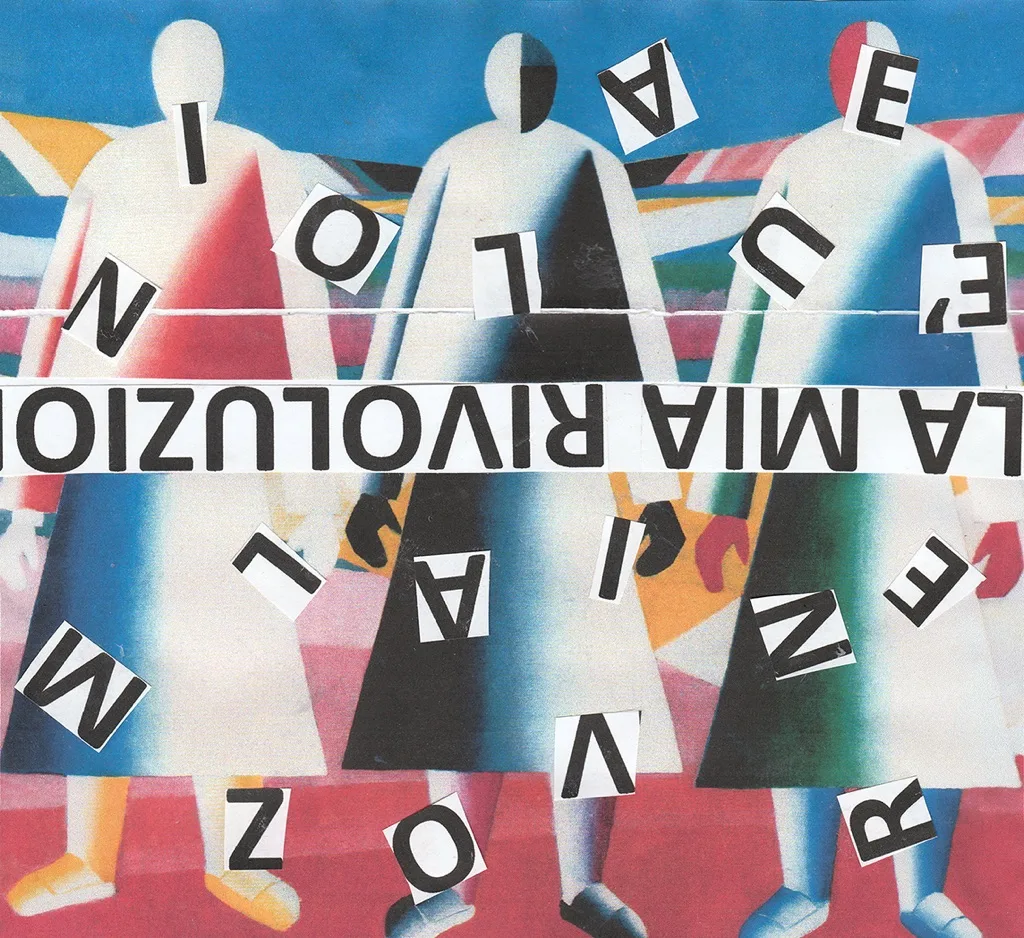
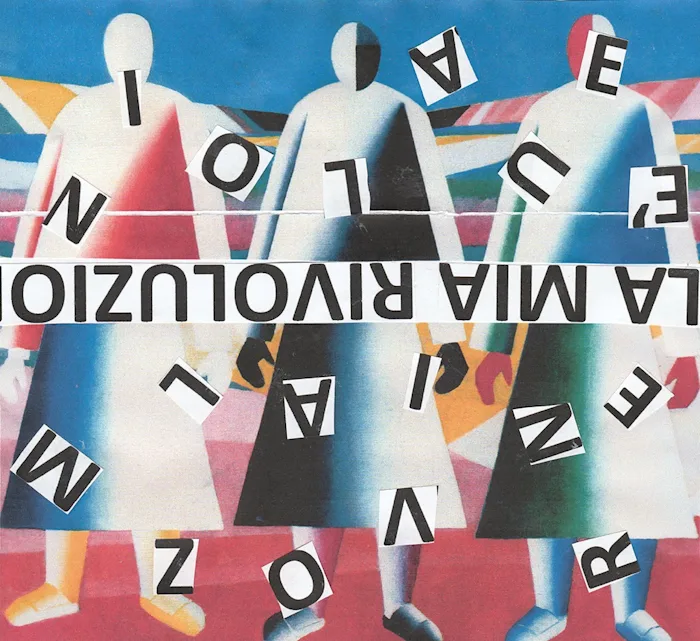
The movement’s strength lay in providing a warning to the hidden, indecipherable society of post-industrialism concerning the dramatic shift it was about to undergo. It was from this understanding that the movement of ’77, in terms of its contents, was able to grasp the fulcrum of the problems that this passage implied: the problem of labor and its transformations.
The noisy interruption of the movement of ’77 — whose composition included students, young proletarians and women with precarious "non-guaranteed" connections to the labor market — onto the social scene forced the national experts of sociological analysis to see society in all its raw and coded features. But right from the start, these subjects showed themselves to be resistant to the traditional paraphernalia of sociological and psychoanalytical investigation that might otherwise have shed some light on their deviation from the rules of "civil coexistence." And thus, without dates, numbers and EEGs to analyze, our "experts" found it impossible to go beyond the task of simply filling up their knowledge gap with an uninterrupted stream of startled statements published for months in newspapers and magazines, whether in the independent or party press.
This "debate" continued right down to the serious, scintillating minds of the Communist Party. In the wake of Luciano Lama being chased out of Rome University, it fell to Asor Rosa, former "workerist" of the journals Quaderni Rossi and Classe Operaia to formulate a full analysis of the new social subjects who were rising up. This meditative energy took the name of the "Theory of Two Societies" and earned enough success to immediately become the official analysis. 1
His line of argument went more or less like this: the crisis determined unemployment, and the hardest hit had been the youth; unemployment represents marginalization from the system of productive laborr (that performed by factory-workers); in its turn, marginalization has translated into disaggregation and desperation, which then translates into rash, irrational acts of violence. These marginalized subjects (socially marginalized inasmuch as they are not inserted into the central productive system of the factory) represent a "second society growing next to the first one, perhaps growing out of it but without reaping any salient advantages, with neither outlet nor real roots in the first society" (that is, workers’ society).
For the industrialist culture of the historical workers' movement, "workers’ centrality" means a fixed job within the factories of durable consumer goods. Those subjects who do not have this setting are necessarily "marginal." Within this interpretation, a movement constituted by such subjects — who, furthermore, claim full autonomy from the historical institutions of the workers’ movement (the party and the union) — could not be considered anything but a dangerous phenomenon of marginalization and corporatist leaching, all too easily manipulated by reactionary, conservative forces. It was no accident that the other definitions of the movement conjured up by Giorgio Amendola, a prestigious intellectual of the Communist Party, were "neo-squadism" and "1919-ism." 2
The historical left’s judgment of the "movement of ’77" was based on an analysis of class composition that did not take into account the huge transformation in the productive processes and social working day that had been set in motion by capitalist restructuring. This process of restructuring, which went under the name "industrial reconversion," had begun in 1974 (the year of the oil crisis) and immediately took the form of an attack on the technical and political composition of the working class in the big factories. Lay-offs were the primary instrument used by the bosses to liquidate the cycle of mass-workers’ struggles, overturning the "rigidity" — i.e., the material and political homogeneity — which had provided the conditions for workers’ power in the factory and beyond. The first effects of this restructuring were felt in the creation of a web of decentralization, diffusion, dispersion and fluidity throughout society, with particular relevance for the productive and reproductive processes.
New social subjects, ones that had traditionally been excluded from the labor market, were absorbed into this web, in which working conditions assumed the unregulated characteristics of half-employment and precarity. The Communist Party and the unions did not want to (or could not) understand that these new precarious and non-guaranteed figures nevertheless still had a productive function, whether directly or otherwise: that they really were workers inasmuch as surplus value was extracted from them; that these figures were a constitutive part of the new class composition being moulded around the rhythms of the metamorphoses in the productive process, a process which meant the reduction of traditional manual workers to the advantage of a growth in mass intellectual work.
Instead of turning their attention to these new productive figures and taking note of the new energy that they were expressing in terms of the needs of development and political organization, the Communist Party and the union proposed the crudest of analyses, branding them as an irrational, dangerous phenomenon of the new sub-proletarian mass, to be opposed by the rational democratic strength of a guaranteed working class immured within the great cathedrals of industry, cultivating an illusionary sense of being able to resist the siege mounted by the capitalist attack.
On the level of institutional politics, the Communist Party’s strategy of "historic compromise" found its crucial moment in the local elections of 1975, when it managed to gain a swathe of local seats, including some quite significant ones, and still more the following year when it managed to come within a hair’s breadth of the Christian Democrats in the national elections.
This noisy electoral success arrived in the wake of the struggles of mass movements over the previous years that the Communist Party had pulled back into the social aspect of its project through chains of transmission. At this point, it pushed itself forward, running for elections as a "party of government" devoting all its energies to maneuvers of alliance and negotiations with other parties.
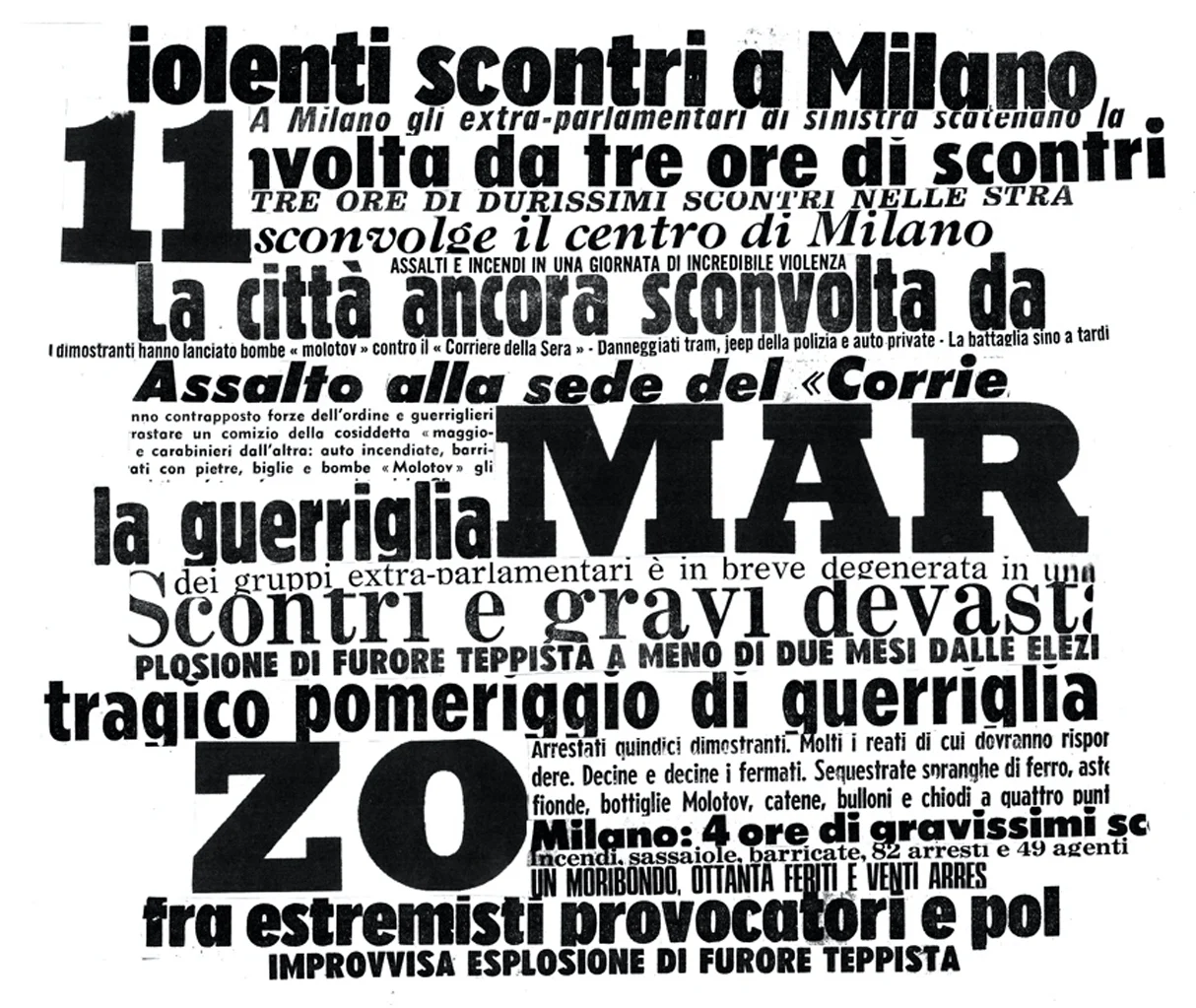
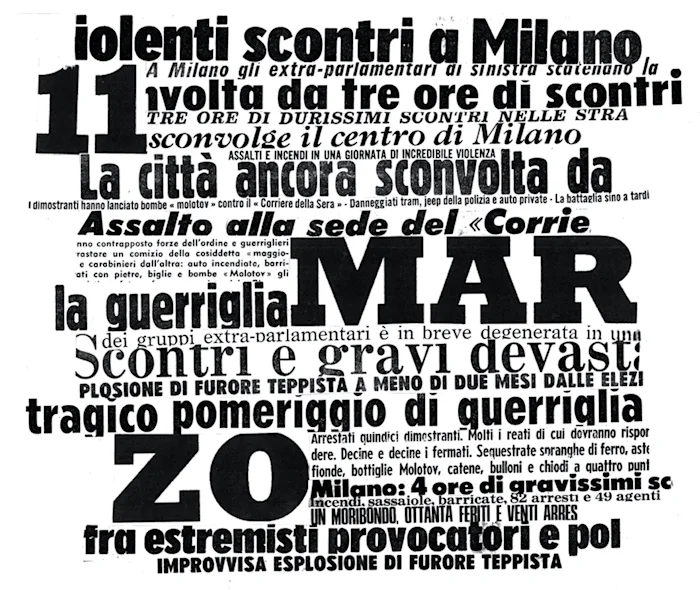
The realization that in order to govern it needed to build an image of democratic credibility had pushed the party to accept a role as guarantor of social conflict, as long as this conflict — in terms of those aspects that were incompatible with the survival of a system otherwise in crisis — could be redimensioned, controlled, channelled and managed, discredited, excommunicated or repressed if needs be. The consequence, particularly in work places, was that sections of the union controlled by the party developed a line that, on the one hand, moved towards a determined elimination of every form of uncontrolled or uncontrollable worker opposition, and on the other proposed itself, for the industrial layers, as a force capable of finding a way out from the productive crisis.
The result of this confrontation was the union’s emphasis on a "two-phase politics": first, there would be the working class’s sacrifices in order to re-establish those margins of capitalist accumulation that had been eroded during the struggles of the previous years; then there would be a return to production and an equal redistribution of income and power.
In the context of this cultural background and political strategy, the Communist Party and the unions found themselves in 1977 confronting the unforeseen emergence of a movement characterized by the presence of highly educated proletarian subjects who had been hit by the effects of a rapid transformation within the system of production now directed towards the dissolution of industrial labor’s central position.
These subjects represented a final moment of concentration, a vast funnel containing all the accumulated knowledge and memories of organization within an uninterrupted cycle of anti-institutional struggles, those of the Autonomists and radicals, which had begun in the 1960s. They were bearers of history, the logical product of the mass-worker from the standpoint of the dialectical relation to capitalist restructuring, and, as a consequence, they turned out to be extremely aggressive in terms of their antagonistic political expression.
The concept of the refusal of work which had cut across the 1960s and the first half of the 1970s now finally found its most effective generation, one that made this concept the central element of their cultural, social and political identity. If the restructuring and fluidification of the labor market included a new productive arrangement in which working activity was characterized as precarious, fleeting, and with a free exchange between manual and intellectual functions, then the ’77 subjects made this their own, an extreme mobility between different jobs (and between employment and unemployment) which understood the hiring out of labor power as merely an occasional moment in — rather than a fundamental and constitutive part of — one’s existence.
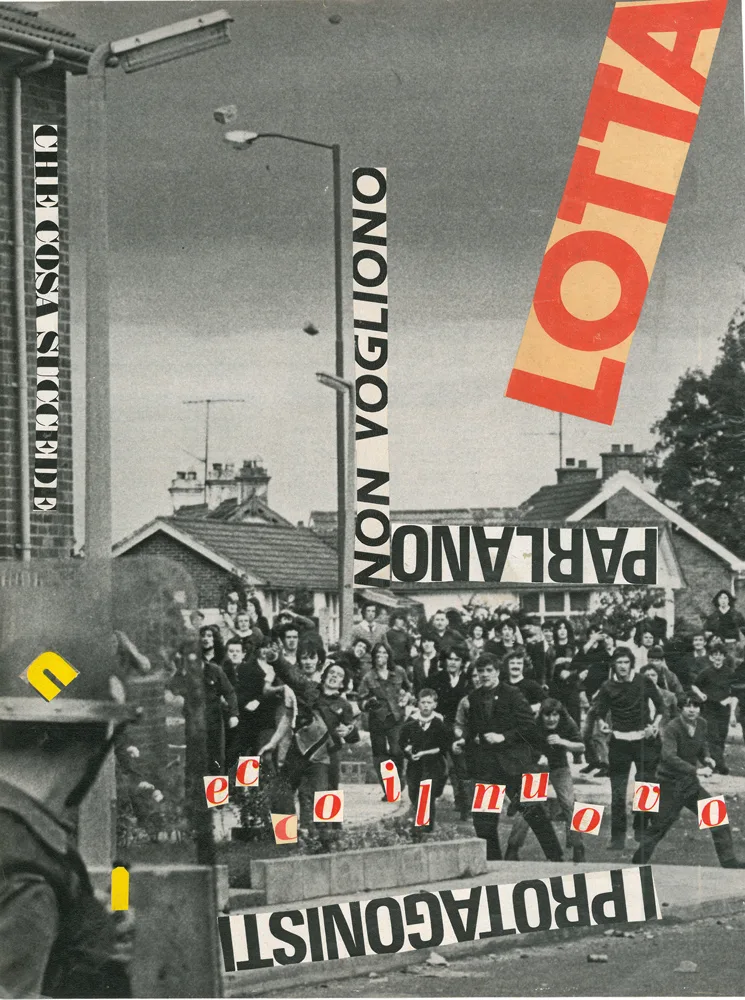
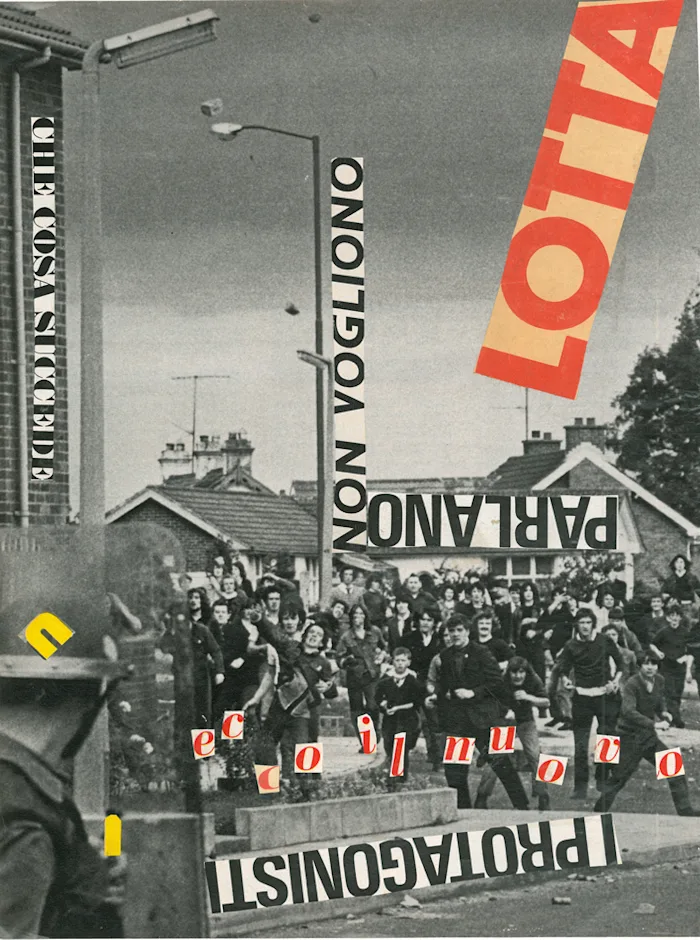
Instead of creating pressure through the struggle to secure a life-long "fixed job," whether in the factory or the office, they privileged experimenting with possible alternatives for procuring an income. For these subjects, flexibility within the labor relation derived from the imposition of their own will, a conscious and privileged choice to move away from guaranteed, eight-hour-a-day work for one’s whole life. Young workers who were already employed in the factories, once they had evaluated the impossibility and futility of resisting the process of restructuring through a struggle to "safeguard jobs," handed in their resignation, choosing the new front of flexible jobs instead.
It was above all due to these attitudes and these choices — rather than any predisposition to the use of violence in struggle — that the young people of the movement of ’77 caused a scandal in the ranks of the historical workers’ movement. It was for these reasons that the tradition of the workers’ movement, based on an ideology of work, appeared not only extraneous to the movement of ’77 but even objectively an enemy, an enemy to their own need (one that had matured through the extraordinary development in productive forces) to free themselves from a life of slavery under the regime of labor’s command. The conflict was both fierce and inevitable.
Thus ’77 saw a flaring up, a quotidian generalization of a political and cultural conflict with ramifications for every part of society, exemplifying a conflict that had taken place throughout the 1970s, a fierce conflict both between classes and within the class, perhaps the fiercest seen since the Unification of Italy. Forty thousand criminal charges, 15,000 arrests, 4,000 people sentenced to a thousand years of prison—and then there were the deaths and the hundreds of wounded on both sides. There is no doubt that these figures cannot be considered merely the result of some risky, crazy plan dreamt up by evil minds bent on triggering nihilistic tensions within uncultured, marginalized social strata. Rather, the conflict was a necessary moment, the consequence of social contradictions between classes that, within a generalized crisis, pushed forward into a head-on conflict for the redefinition of new rules of power. [...]
Communication, Power, and Revolt
An important aspect of the social and political process over 1977 was the discussion of the role and function of intellectuals.
The debate developed in two moments. It first emerged around the problem of the relation between information and the movement in February and March; it then exploded in July and drew in the majority of Italian intellectuals, following the Paris appeal against repression in Italy.
But in order to better understand the context in which these discussions took place, we first need to briefly outline two issues: the first relates to the choices undertaken by the Communist Party during the period of the ‘national solidarity’ government, while the second relates to the character of the movement of ’77, especially in Bologna.
The ‘historic compromise’ — the line that the Communist Party took from 1973 onwards — had brought it into a position of substantial servitude in relation to the Christian Democrats; it meant that the task fell to intellectuals to create consensus and dependence in relation to the ‘democratic state’.
In the mid-1970s, this supposedly democratic state had taken various decisions that were difficult to consider democratic as such: the Reale Law, passed with the approval of all the political forces and the abstention of the Communists, gave the police such broad powers to intervene against the movements and public demonstrations that, over the arc of a few years (between 1975 and 1977), more than a hundred people were killed in the streets: Pietro Bruno, Mario Salvi, Giannino Zibecchi to name but a few, far left militants that the Communist Party helped to depict as dangerous subversives. 3 Furthermore, in order to confront the consequences of the economic crisis and catch up with the gains that workers’ power had made in the factories, the ruling class orchestrated a political and economic attack given cover and legitimized through the proposal of workers’ sacrifices — which the Communist Party and the unions attempted to impose on the workers’ movement.
This environment encouraged a statist culture, sanctioned by the congress at the Eliseo Theater in January 1977, at which Enrico Berlinguer requested that intellectuals undertake a choice between two alternatives: accept their role as functionaries of consensus and administrators of the state of things, or be identified as subversives, a danger to democracy.
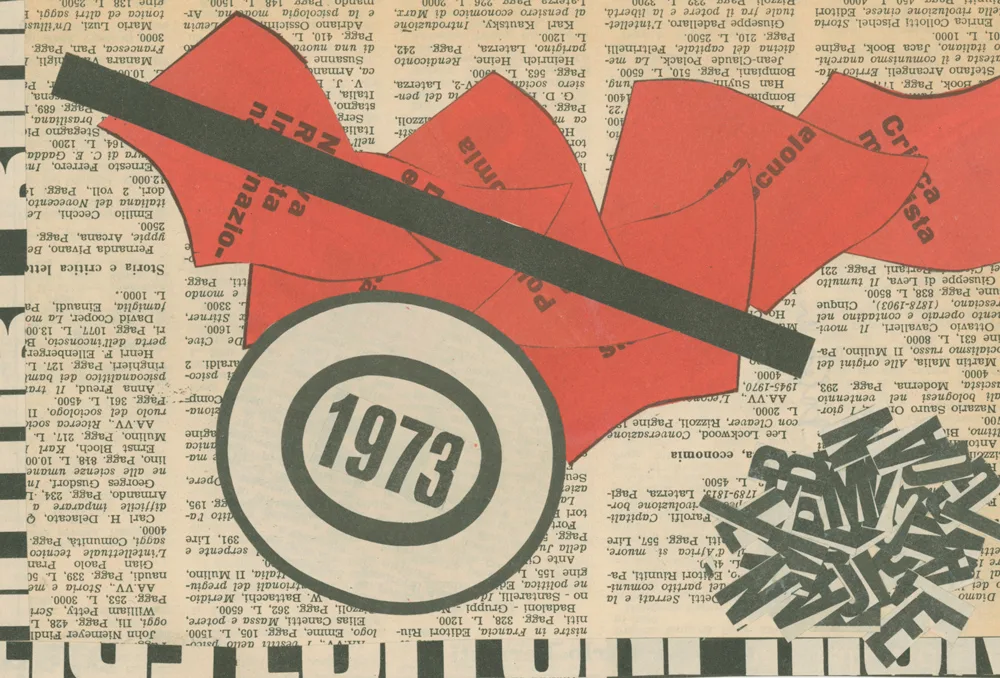
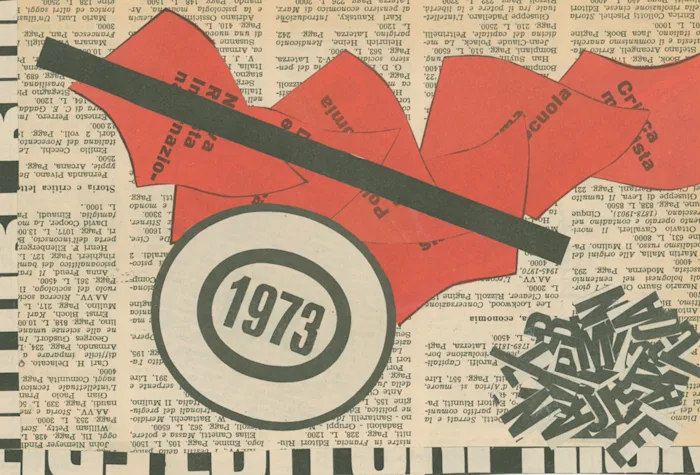
Thus the conditions were set for the marginalization of all the new cultural tendencies, all those cultural experiments attempting to interpret the need for autonomy and the drive for liberation emerging from the more dynamic sections of Italian society (especially the young educated unemployed and the young workers rebelling against factory discipline). And the conditions were also set for the statist corporatization of intellectual roles, a process that would have very serious effects in the years following 1977, especially in some of professional layers such as the judiciary which ended up becoming the armed branch for creating consensus, as demonstrated by the persecutions that began to take on a mass character in March 1977 in Bologna and then returned in a systematic manner from April 7th, 1979, i.e. the mass arrests.
This operation of persecution, as everyone knows, was revealed in all its hateful intolerance when the narrative that had been constructed by "insiders" collapsed in court, exonerating hundreds of militants and intellectuals of the accusations that had been leveled against them by judges trained in the culture of state communism. But you can only fully grasp the meaning of this persecution if you return to the polemics around the role of intellectuals, and the opposition that had been created between statism and autonomy.
The second issue that needs to be understood, in order to provide the context in which the debate developed, is the novelty and specificity that the movement represented when it took center stage in 1977, characterized as it was by its creativity and cultural critique.
The creative movement that took form haphazardly between 1975 and 1977 should be seen, again, from two perspectives. It was a movement of rebellion situated within a social constellation of mixed backgrounds, which then became flattened out through a high level of education.
What emerged was a swarm of experiments that demonstrated a social intelligence which was trying to escape from the depersonalization of industrial labor. At the same time, the movement made a new productive identity possible, one destined to be absorbed into a working process which we now call ‘immaterial’, one which expanded outward during the epoch of the crisis of the classic industrial system.
Those who were involved in the movement of rebellion in those years felt themselves to be — and truly were — the harbingers of a new way of making culture, no longer subordinate to a political system and the reproduction of consensus. But, whether they were aware of it or not, they were also subjects destined to give rise to a new method of working that took shape subsequently, starting from the subordination of creativity to the rules of productive efficiency.

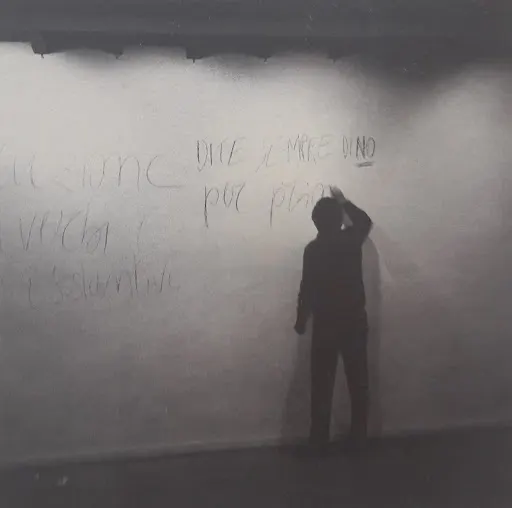
There were two different cultures which took shape in the same movement. One searched for the possibility of a radical cultural autonomy from political and economic power; the other was preparing professional working skills for the cycle of immaterial and imaginary production.
But these different cultures lived, unconsciously, within the same people, within the same social layers.
There was some attempt to translate this contradictory process into a form of explicit awareness: I am thinking of the movement that called itself ‘mao-dada’. The inspiration for mao-dadaism can be synthesized thus:
Dadaism wanted to break down the separation between language and revolution, between art and life. This remained merely an intention because dada did not stand within the tradition of a proletarian social movement, and the social figure of the proletarian was not within dada: the overturning of the class relations and cultural transformation did not intervene into life itself and the materiality of social needs. Maoism points towards an organizational path not as a hypostatic representation of the vanguard subject but as the ability to synthesize needs and tendencies already present in the material reality of labor and life. 4
According to the hypothesis of mao-dada, therefore, the development of new forms of communication, the development of information technologies and telematic networks made possible the reinvention of the old dadaist utopia: the abolition of art/the abolition of daily life, through abolishing the very separation between daily life and art. Through the spreading of pervasive, polycentric communication technologies, this project could finally be realized and practiced by a range of proliferating, communing situations: defining the relation between sociality and production, leaving behind an integrated capitalist system and constituting autonomous systems for communication production.
Maybe this hypothesis was enacted in a way that was overly immediate and spontaneous for a large swath of the grassroots and the movement. But it did not become an element of reflection on the role of intellectuals and the transformation that intellectual labor was undergoing, nor on the movement that was preparing itself to take on the entirety of mental activity and its absorption by part of the productive and media machine.
We said above that the debate around the issue of intellectual labor, and on the role and function of workers involved in the dematerialization of social labor occurred in two moments. In the first moment, between February and March of the very full year that was 1977, the discussion centered on the new characteristics that the mass movement was assuming and on its particular need to focus on problems of language, practices of information and creativity.
Creative experiments were widespread and flourishing: this was the high period of cut-and-paste broadsheets and free radios. The radios expressed the explosion of autonomous languages, but also represented the first attempt at informational self-organization, understood not only in terms of social and existential transformation but also as labor, as productive activity.
The A/traverso collective thus wrote in the book Alice is the Devil (Alice è il diavolo):
We need to overcome the dictatorship of Meaning, to introduce nonsense into the order of communication, to give voice to desire, rage, madness, impatience and refusal. This form of linguistic practice is the only one appropriate for a total practice that can overcome the dictatorship of the Political, that can introduce appropriation, the refusal of work and collectivization into behavior as such. This is why the relation between the movement and Radio Alice is not guaranteed so much by the content, the messages that Alice transmits but rather by the very gesture it is proposing as a collective, subversive linguistic operator. It is the linguistic organization of the tool, in fact, that defines a space, that outlines its discriminants. 5
But there was also an awareness of the new productive role of information and the problematic being opened up through the absorption of linguistic practice into the social-labor process:
The task ahead is to subvert the information factory, to disrupt the information cycle, the collective organization of consciousness and of writing. This process of the proletarianization of technical/scientific/information labor poses the question of why intellectual labor is no longer understood by the movement as external and voluntary, a service lent to the movement, but internal, placed within the remit of the information guerrilla, the sabotaging of the productive and political brain of the cybernetic organization of control, the sabotaging of the information cycle. 6
Few managed to discuss these positions without branding them as "madness" or subversive incitement. One of these rare figures was Umberto Eco, through a few articles he published in more mainstream newspapers and magazines.
Eco saw that ‘the new generations live and speak the language of the avant-garde in their daily practice (or rather, a multiplicity of languages)...this language of a divided subject, this proliferation of apparently codeless messages, was understood and practiced to perfection by groups that still today remain outside of high culture.’ 7 This new ‘linguistic capacity’, the ability to transcode— i.e. shifting from code to code — was understood by Eco as the consequence of the self-constitution of a new technical-communicative system. Eco’s positions (even while they differed from those of many other commentators and critics for their dignity and insight) were criticized by the movement because Eco knowingly dismissed any reference to conscious intention, that is, to the political and cultural project contained within the new languages.
In hindsight, one might say that the movement’s creative project had been swept away by the force of the technical-communicative changes: the creative movement was absorbed by and yielded to the organizations of the media, to the investment of vast sums of capital in publicity, television, fashion, to the submission of creative ideas and languages for a system that produces imbecility by means of mental labor.
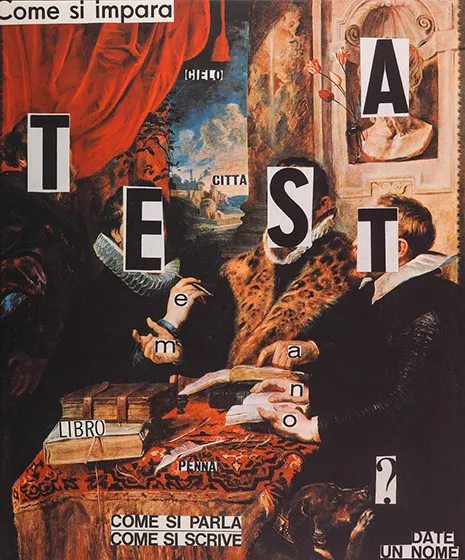
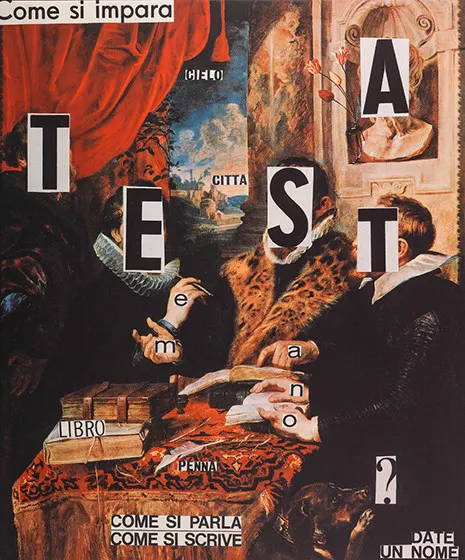
But in this period, those months that saw an insurrection of signs and symbols, the movement searched for the possibility of providing an autonomous form to alternative communication. This is why a public response in L’Espresso, signed by Franco ‘Bifo’ Berardi and Angelo Pasquini, stated that the socialization of style and the problematics of the literary avant-garde could not be reduced to a purely communicological fact, but needed to lead to a radical redefinition of productive relations, social identity, and power.
This issue was taken up again by Maurizio Calvesi in his book Mass Avant-Garde, which presented the reader with the entire parabola of the problems posed in those months of spring ’77 in order to delve further into the question of the creative movement as a realization of the avant-garde’s artistic utopia, within the context of the development of faster means of communication and technologies for the production of imagination. 8 The creative movement represented exactly this: the realization of the avant-garde desire to bring life into art and to establish art within life itself. The prospect of this realization was intrinsically connected to the massification of the linguistic break posed by the avant-garde and the concatenation of mass creativity and communication technologies.
The actual development of the social conditions in which this concatenation took place was, in fact, entirely asymmetrical to the intentions of the movement itself; it introduced an entirely new form for the subordination of creative activities to capitalist production in the era of its dematerialization. There can be no doubt, however, that the creative movement had correctly understood that the world of the imagination and its social production were the new grounds on which transformations were being carried out. It was in this context that the debate took its first steps forward in spring ’77.
Umberto Eco made an important intervention in another article that came out in L’Espresso under the dramatic title "No, I Will Not Kill Myself for God." He maintained that the movement had made a critical mistake by confusing symbolic claims for concrete realities:
When I look at many of the attitudes within the movement, I wonder whether this movement tends to transform concrete attitudes into mere symbols, into self-contained declarations, rather than with the aid of the pen, or indeed activity. I don’t meant to say that such declarations ought be dismissed. I mean that one needs to be clear and that statements need to be recognized as such. It is one thing to prefigure the assault on the Winter Palace in a great symbolic festival; it is another to actually occupy it. 9
But, at the same time, Eco truly grasped how this kind of semio-morphosis had collided with the current world, and the identification of the world with exchange and the intersection of symbolic statements, informational events, the simulation of the imagination. The grounds of the imagination became the determining site of every social process, and domination over the living molecules of society is increasingly the domain of a semiocracy, the domain of symbols and signs. And ’77 represented exactly the moment in which society began to wake up to this shift.
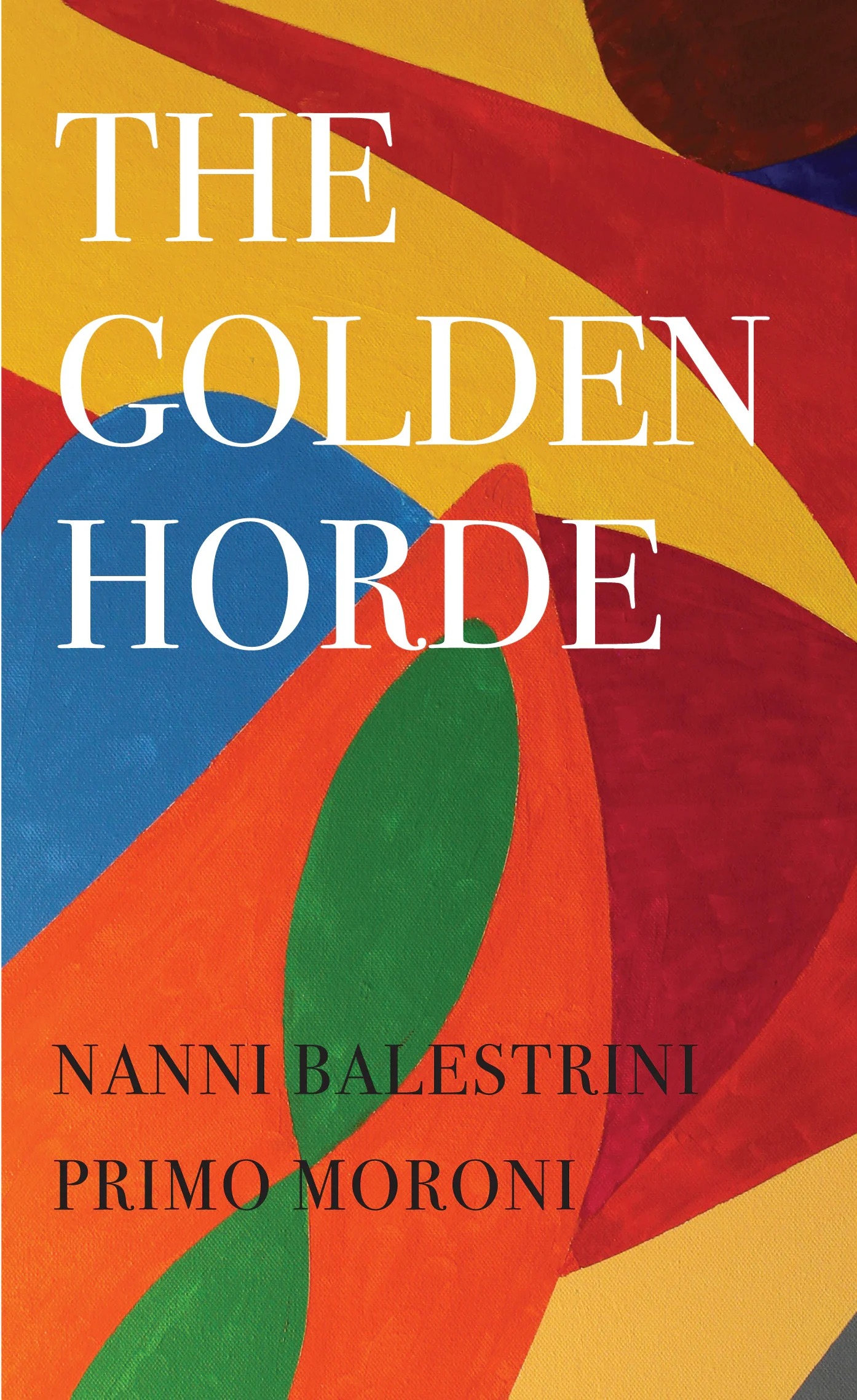
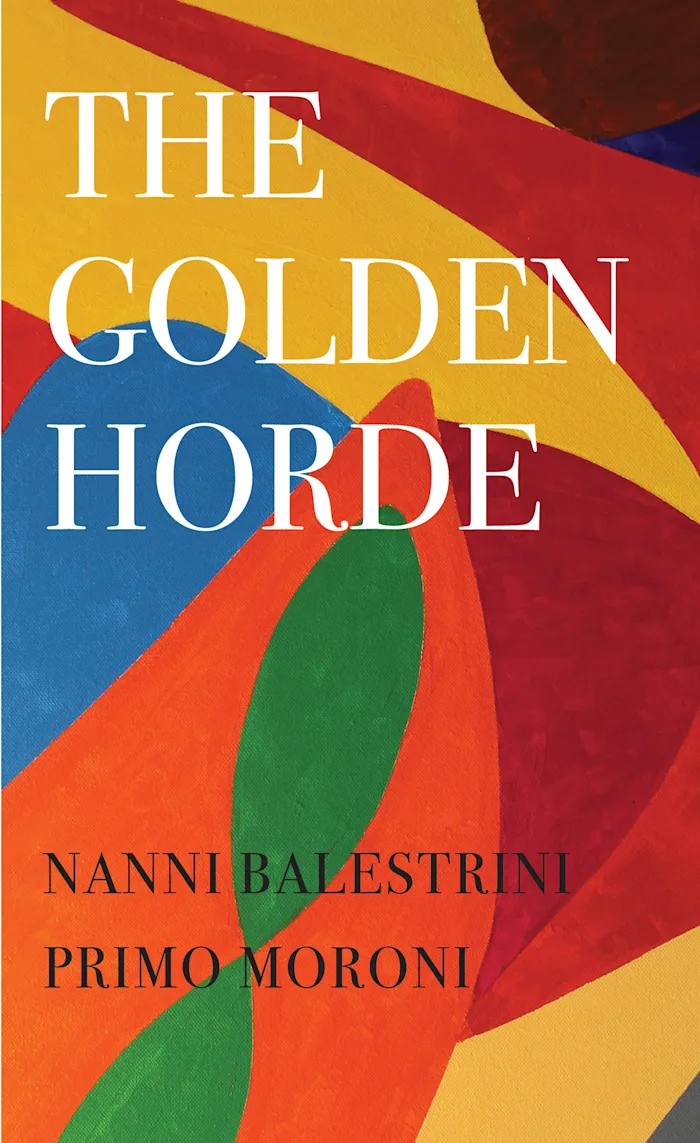
Translated by Richard Braude
Art: Nanni Balestrini
Notes
1. Alberto Asor Rosa, Le due società (Turin: Einaudi, 1977).↰
2. *Neosquadrismo and diciannovismo: both terms refer to post–First World War proto-Fascist and anti-worker paramilitary groups. —Trans.↰
3. The Reale Law: a modification to the penal code promoted by Oronzo Reale, Minister of Justice, introduced in 1975 to combat left-terrorist groups. In truth, the Communist Party voted against its introduction; it was in the referendum of 1978 that the Party was more divided (although it still did encourage a ‘No’ vote). See Stephen Hellman, Italian Communism in Transition (Oxford: Oxford University Press, 1998), Chapter 3. —Trans.↰
4. A/traverso February 1977. ↰
5. Collectivo A/traverso, Alice è il diavolo (Franco Berardi and Ermanno Guarneri eds) (Milan: ShaKe, 2000 [1976]).↰
6. Collectivo A/traverso, Alice è il diavolo.↰
7. Umberto Eco, ‘Il laboratorio in piazza’, L’Espresso, 10 April 1977. Republished in Eco, Sette anni di desidero (Milan: Bompiani, 1983).↰
8. Maurizio Calvesi, Avanguardia di massa (Milan: Feltrinelli, 1977).↰
9. Umberto Eco, ‘No per dio non mi suicidio’, L’Espresso 17 (1977).↰